This is the third and final remaining problem to a massive data cleaning task I have been working on for over a year. Thank you Stack Overflow community for helping figure out:
Problem 1- Index multiple columns and Match distinct values....
Problem 2- Count unique values that match ID, optimized for 100,000+ cases.
I'm not 100% sure if the following is achievable in excel, but I'll do my best to describe the data cleaning and organization challenge I'm faced with.
I have a series of data markers/attributes that are in a random order across 24 columns, spanning 500,000+ rows. Image 1 below is an example of what the data looks like in raw form, presented across 12 columns and spanning 22 rows for illustrative simplicity. Columns A through L contain the raw data and Columns M through X represent the desired output.
SUMMARY OF THE TASK: What needs to be accomplished is a series of matching functions that search through all indexed columns (in this case columns A through L) to identify unique values (e.g. 1), search for the value in range (in this case A2:L21 range), identify the adjacent values to the unique value (for value 1, adjacent values are 2 and 13-XR), then output them in a descending sequence from most frequently occurring value to least frequently occurring in each row that contains any of the values in question (in this case, 1 occurs 5 times and is placed in M2 through M6; 2 occurs 3 times and is placed in N2 through N6; and 13-XR occurs 2 times and is placed in O2 through O6).
To clarify, below is a step by step description using colours to illustrate the pattern matching in the raw data (columns A through L) and how these patterns should then presented in the output (columns M through X). I've sectioned off each of the following images into the six patterns that are in the raw data.
The above image is the first pattern that would be identified by the VBA solution. It would identify "1" as a unique value and search through the A:L range for number of instances of "1" (highlighted in blue), then identify all the values that can be found adjacent in the same row: "2" in rows 3, 5, and 6 (highlighted in green); and "13-XR" in rows 4 and 5 (highlighted in pink). This would then need to be done for "2", identifying the adjacent values ("1" and "13-XR"), and then for "13-XR", identifying ("1" and "2" as adjacent values). The output would return the unique values with the most frequently occurring in Column M ("1" occurs 5 times), then the second most occurring in Column N ("2" occurs 3 times), and the third most occurring in Column O ("13-XR" occurs 2 times).
The above is little more complex. The VBA would identify "3" as a unique value, search through the A:L range for other instances of "3" and identify all the values that are adjacent to it (in this case, "4", "7", and "9"). It would then do the same for "4", identifying all adjacent values (only "3"); then for "7", identifying adjacent values ("9", "3", and "12"); then for "9" identifying ("7", and "3"); and finally, for "12" identifying adjacent values (only "7"). Then for each row where any of these values are present, the output would return a "3" in column M (occurring three times) and a "7" in column N (also occurring three times); if counts are equal, they could be presented in ascending fashion A to Z or smallest to largest... or just random, the ordering of equal counts is arbitrary for my purposes. "9" would be returned in column O as it occurs two times, then "4" in column P and "12" in column Q, as they both occur once but 12 is greater than 4.
The above image represents what is likely to be a common occurrence, where there is only one unique value. Here, "5" is not identified in any other columns in the range. It is thus returned as "5" in column M for each row where a "5" is present.
This will be another of the more common occurrences, where one value may be present in one row and two values present in another row. In this instance "6" is only identified once in the range and "8" is the only adjacent value found. When "8" is searched for it only returns one instance of an adjacent value "6". Here, "8" occurs twice and "6" only once, thus resulting in "8" imputed in column M and "6" imputed in column N wherever an "8" or a "6" are present in the row.
Here "10", "111", "112", "543", "433", "444", and "42-FG" are identified as unique values associated with one another in the A:L range. All values except "10" occur twice, which are returned in columns M through S in descending order.
This final pattern is identified in the same manner as above, just with more unique values (n=10).
FINAL NOTES: I have no idea how to accomplish this within excel, but I'm hoping someone else has the knowledge to move this problem forward. Here are some additional notes about the data that might help towards a resolution:
- The first column will always be sorted in ascending order. I can do additional custom sorts if it simplifies things.
- Out of the ~500,000 rows, 15% only have one attribute value (one value in column A), 30% have two attribute values (1 value in col A & 1 value in col B), 13% have three attribute values (1 value in col A, B, & C).
- I have presented small numbers in this example. The actual raw data values in each cell will be closer to 20 characters in length.
- A solution that does everything except present the patterns in descending order would be absolutely cool. The sorting would be great but I can live without it if it causes too much trouble.
If anything in this description needs further clarification, or if I can provide additional information, please let me know and I'll adjust as needed.
Thanks in advance to anyone who can help solve this final challenge of mine.
ADDENDUM:
There was a memory error happening with the full data set. @ambie figured out the source of the error was adjacent chains (results) numbering in the 1000s (trying to return results across 1000s of columns). Seems the problem is not with the solution or the data, just hitting a limitation within excel. A possible solution to this is (see image below) to add two new columns (ATT_COUNT as column M; ATT_ALL as column Z). ATT_COUNT in Column M would return the total number of unique values that would ordinarily be returned across columns. Only up to the top 12 most frequently occurring values would be returned in columns N through Y (ATT_1_CL through ATT_12_CL). To get around the instances where ATT_COUNT is > 12 (& upwards of 1000+), we can return all the unique values in space delimited format in ATT_ALL (column Z). For example, in the image below, rows 17, 18, 19, and 21, have 17 unique values in the chain. Only the first 12 most frequently occurring values are presented in columns N through Y. All 17 values are presented in space delimited format in column Z.
Here is a link to this mini example test data.
Here is a link to a mid sized sample of test data of ~50k rows.
Here is a link to the full sized sample test data of ~500k rows.







